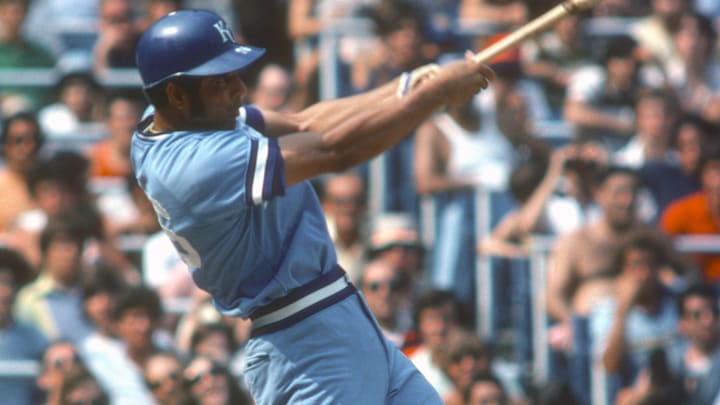Willie Wilson succeeds Amos Otis with the Royals
Wilson became Otis' heir apparent, but the succession plan was gradual. Wilson debuted for Kansas City in 1978 but, because Otis wasn't quite ready to give up center field, had to make himself a home in left. Unfortunately, a hand injury affected Otis' hitting, and he began to lose a step defensively; even he couldn't outrun Father Time.
Otis started the 1980 season on the Disabled List, allowing the Royals to get a look at Wilson in center. Wilson didn't disappoint, but moved back to left when Otis returned for one last Royal hurrah.
The Royals finally overcame the Yankees to make the World Series in 1980, but their first Fall Classic appearance didn't go well. Brett was famously hampered by hemorrhoids, Wilson struggled mightily, and they lost to Philadelphia in six games.
But Otis was fantastic, recording a .478 average with three home runs and seven RBI. Sadly, it was his last shot at a Kansas City championship — he wasn't a Royal when KC won it all in 1985.
He did have a couple of good years, however. He was still good in 1981 and '82, albeit in fewer games as he battled injuries and competed against Wilson for playing time. But he hit a wall in 1983 and, seeing the writing on that wall, signed with the Pirates after the season ended and played with them until they released him late in the '84 season. He never played again.
Wilson became the Royals' man in center field, and in many ways was superior to his predecessor. Worthy of much praise and a legend in his own right, Wilson will always be my quintessential Royals center fielder, but for my dad and his generation, it will always be Otis. For my older sons, the nod goes to Cain. But despite a chain of outstanding center fielders stretching across the franchise's history, no one embodied the role quite like Otis.
